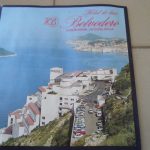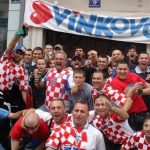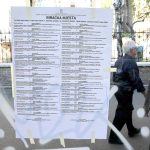The Croatian History Museum in Zagreb is set to shine the spotlight on the uglier, but much more real side of Dubrovnik’s long and colourful history at the end of this month…
The Museum of the Homeland War (Muzej Domovinskog Rata) which sits inside the Napoleonic Fort Imperijal on top of the imposing Mt. Srdj in Dubrovnik is the very first of its kind in Croatia, and it seems that initiatives are being taken elsewhere in the country as DuList reports on the 27th of March 2017 that an interesting mobile exhibition under the name “Dubrovnik in the Homeland War 1991 – 1995” will be opened on the 30th of March 2017 at the Croatian History Museum in Zagreb.
Consisting of four chronological topics, the exhibition which will be presented in the country’s capital will mark ten years since the opening of Dubrovnik’s popular war museum, highlight the struggles Croatia’s southernmost city faced at the hands of its attackers, and aim to honour the incredible willpower shown by its residents during an inhuman and barbaric siege – an act of unfettered, unashamed brutality and destruction which had not been seen in Europe since Hitler’s blackshirts had roamed the continent.
1) Preparations for the defense of Dubrovnik:
The first section details the course of events that took place in Dubrovnik and the surrounding area, including the very first multi-party elections and Croatian independence, preparations for defense and the subsequent establishment of the very first armed units, to the Serbian – Montenegrin attack on the city on the 1st of October 1991.
2) Serbian – Montenegrin Aggression during 1991:
The second section will follow the various military operations of the aggressors, the bravery and resistance of inadequately armed soldiers defending Dubrovnik, the organisers of defense, the setting up of HV units to everyday wartime life for civilians, which was nothing less than an existence filled with suffering, fear and sacrifices of the entire population in a hostile and dangerous time period. The victorious and truly heroic defence of the city which resulted in both the military and political defeat of the aggressors naturally holds a special place in the exhibition.
3) Days of Victory – Croatian Liberation of the Croatian south in 1992:
The third section visits the events which took place in the Dubrovnik area in regard to the Sarajevo truce which was signed on the 3rd of January 1992, the international recognition of modern-day Croatia and the beginning of the implementation of the Vance Plan in February 1992. Various sub-themes including but not limited to events during Operation Storm (Oluja), and the theme of the final liberation of temporarily occupied areas of southern Croatia in late October 1992 will also be adequately covered.
4) The suffering of Dubrovnik:
Number four will bring the audience to a deep and comprehensive overview of the suffering of the general population of Dubrovnik during the war, accompanied by unsettling information on those who lost their lives and/or were wounded, including both defenders and ordinary civilians. This deeper look at the human side of war includes upsetting information on detainees of Serb-Montenegrin concentration camps, refugees and displaced persons forced to run, war damage inflicted upon both civilian and commercial facilities, as well as the disgraceful, wanton destruction of a UNESCO World Heritage Site as the world looked on in horror.
The brilliantly done mobile exhibition will present its Zagreb audience with more than 350 objects from varying collections of the War Museum and – much like Dubrovnik’s very own War Museum – will be accompanied by news and documentary video footage showing the unedited, ugly face of the unjustifiable aggression which befell Dubrovnik and its people in a wholly unprecedented and brutal attack on culture, innocence and civilians.
Organisers stated that this exhibition will be a significant step forward in a joint effort for Dubrovnik, otherwise a city of history, culture and art; to become recognised by the general public as a symbol of heroism and victory in war, as well as the sacrifice and suffering of its soldiers and citizens, and unprecedented, mindless destruction of its high-grade cultural heritage. It was added that it does not seem excessive to present Vukovar and Dubrovnik to the world with the truth about the real character of the aggressors and their aggression, and the sheer enormity of the struggle of the Croatian people for freedom and independence in the face of a dirty war of conquest.








